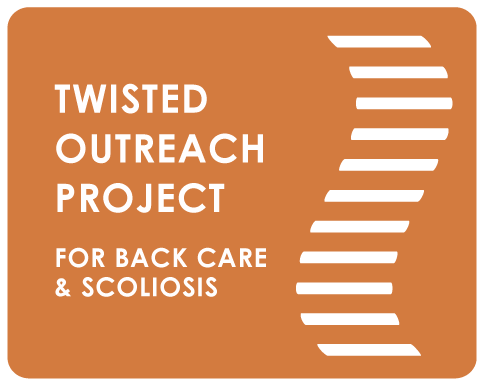Finding a Surgeon; Proceeding With Rod Removal
This is Part 3 of a serial blog post. In Part 2, I shared the emotional journey that lead to my decision to have my Harrington rods removed in 1995. Read Part 1 and Part 2.
Disclaimer: This serial blog details my own personal experience related to scoliosis surgery in 1974 and Harrington rod removal in 1995. Please note that the times and treatments have changed, and not all patients have the same experience or results. Be sure to carefully consider your own surgical treatment decisions, given the current context, and with all information available. Visit our Back Care page for a review of medical and supportive care options.
It was not easy convincing the new surgeon to remove my Harrington rods. He was unsympathetic to most of my initial reasoning — that I didn’t “like” the foreign object in my body; that the rods “felt weird”, and like they were “vibrating”. On my second visit, I sobbed, and begged him to remove them, explaining that it felt like the rods were destroying me physically and emotionally, and that they hurt and got in the way of my dancing.
“They’re ruining my life,” I said.
It was melodramatic, perhaps, but it was the truth for me, and a relief to finally admit it. My admission worked. Reluctantly, he agreed to perform the operation.
It’s important to note that in most cases of Harrington rod surgery for scoliosis, after the fusion has solidified, the rods are not really necessary. Even if they are removed, the spine remains fused forever, so the curve does not increase easily (however it can happen that the non-fused sections get worse with and without the rods, unfortunately.). Over the years, I have met some patients from other countries where it is quite common practice for the rods to be removed within a few years of the initial surgery.
That said, some of the newer approaches for spinal fusion are such that the metal implants are impossible to remove, due to the way they are attached to the vertebrae.
In my case, the surgeon explained that rod removal is often complicated because the rods become fused to the bone, which requires the surgeon to go through the labour-intensive and risky process of chipping the rods out. He also boldly shared that he wasn’t as interested in removing rods as he was in putting them in - for one, he would get paid less. Seriously...? That one made me laugh. It also made me realize that surgeons must have no idea how uncomfortable it feels to a have rods in your back!
The removal surgery was a big success.
As it turns out, I was extra fortunate as my rods were not fused to my vertebrae. According to the surgeon, they were unusually loose and easy to remove, so no chipping was required. He felt that this was likely because I had stayed very active with my dancing - more active than I was supposed to - and ultimately, that had worked in my favour.
After they removed the hardware, they stitched me back up, and that was that. I was on morphine for about 2 days, back at home with tylenol in about 4 days, and off all painkillers within a week. I was even able to walk several miles in a parade 3 weeks later!
In general, I felt excited and liberated, but I still had muscle spasms and felt very fragile. I became aware quite quickly that I had to learn new ways to hold myself tall and to literally find my own backbone. I also learned that I needed help to do that.
I was still seeing the Reiki therapist, and her treatments helped me to relax and connect to my new body in new ways. However, I also needed help with recurring muscle spasms, so I decided to try a highly recommended deep tissue massage therapist, named Dawn, who subsequently referred me to a personal trainer, named Shawn, for treatments with both of them, over time, to try to break up a significant accumulation of scar tissue. Dawn had identified that my spasms would only stop if the scar tissue was no longer getting in the way. When I asked her how long she thought it would take to break up the scar tissue, she replied, “10 years’.
I was shocked... “WHAT??”
“10 years.”
It took eight.
Before I delve much deeper into my journey towards healing and rehabilitation after rod removal, it’s important to note that my original surgery was over 40 years ago - in 1974. In my next blog post, I compare surgery, treatment and related care (or lack thereof!) in 1974 versus the current context...
Got comments? Please feel free to write us anytime.
